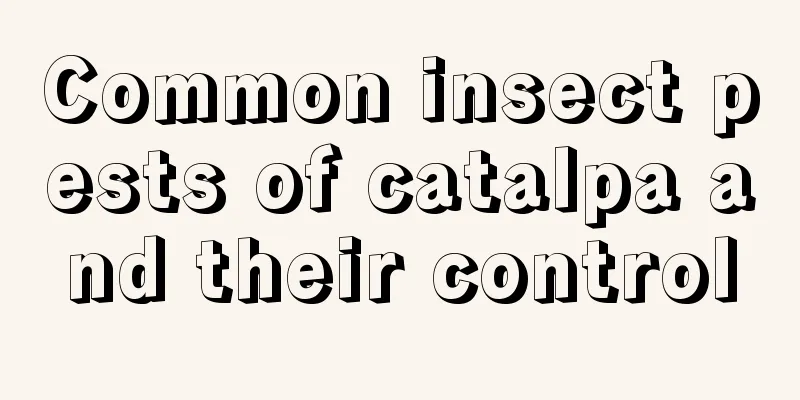Common insect pests of catalpa and their control

Common insect pests of catalpaThere are many types of insect pests that occur on catalpa trees. The most common ones include the amber bug, catalpa borer, paulownia tortoise shell, white kidney armyworm, gypsy moth, frost moth, ginkgo silkworm moth, and green leafhopper. Prevention and control methods of main insect pests of catalpa ovataAmber bugDifferent pests naturally require different prevention and control methods. If the catalpa tree is infected with pests such as the amber bug, you can spray 3000 times the diluted 20% Kangfuduo concentrated soluble solution during the adult stage , which can effectively control the pests. Catalpa fasciatusWhen the catalpa borer occurs, spray 1000 times diluted 10% imidacloprid wettable powder for prevention and control. Paulownia tortoise shellWhen this pest occurs, it can be controlled in its larval stage by spraying 3% hypertonic fenoxycarb emulsifiable concentrate pesticide to kill it. Spodoptera exiguaWhen this type of pest occurs, spray 48% Bacillus thuringiensis during the larval stage to kill it. Tussopus sppWhen the tussock moth occurs, you can spray 3000 times diluted 20% Kangfuduo concentrated soluble substance to kill it during its larval stage . Frost mothWhen the frost moth infestation is serious, you can spray 500 times diluted Bt emulsion to kill it. Green leafhopperIf the plant is infected with pests such as the green leafhopper, prevention and control must be carried out in the nymph stage. You can choose to spray 1000 times diluted 25% cypermethrin wettable granules or 3500 times diluted 48% chlorpyrifos emulsifiable concentrate to kill the insects. Catalpa borerThe larvae of the catalpa borer will eat tender shoots and damage branches. The prevention and control method is to cut off the branches damaged by the pest and then destroy them. When the adult insects appear, you can spray 1000 times dilution of trichlorfon or malathion to poison the adults and the first hatched larvae. |
<<: Diseases and Pests of Magnolia purpurogena and Their Control
>>: Pear tree pests and their control
Recommend
How to make the maiden heart explode
1. Stay warm If you want to grow the maiden heart...
How often should indoor flowers and plants be watered?
1. How many days should I water? 1. Variety: How ...
How to propagate azalea and what to pay attention to
How to propagate azalea The ways to propagate aza...
What fertilizer is best for cyclamen? Special fertilizer for cyclamen cultivation
Cyclamen is a bulbous flower that has a relativel...
Taboos of growing white chrysanthemum in winter
Characteristics of White Chrysanthemum First, we ...
How long to water the green radish after repotting
1. How often to water After repotting the green r...
How to repot a golden diamond
1. Time to change pots Because the growth rate of...
How to care for the newly bought Rieger Begonia
1. Soil Begonia prefers slightly acidic soil. It ...
Can Clivia be watered with Coke?
Can Clivia be watered with Coke? Clivia can be wa...
Is it good for flowers to have earthworms in the pot?
1. The benefits of having earthworms in flower po...
What is the best fertilizer for calla lily?
Calla lily fertilization time During its growth p...
Treatment of tulip flowers after blooming
Obtaining Flowering Bulbs After the flowers fall,...
Primrose pest control
Diseases This plant is prone to "brown spot ...
How to grow aloe vera
1. Pot soil It is best to choose soil for growing...
Can I grow osmanthus at home?
Can I grow Osmanthus fragrans at home? You can pl...









